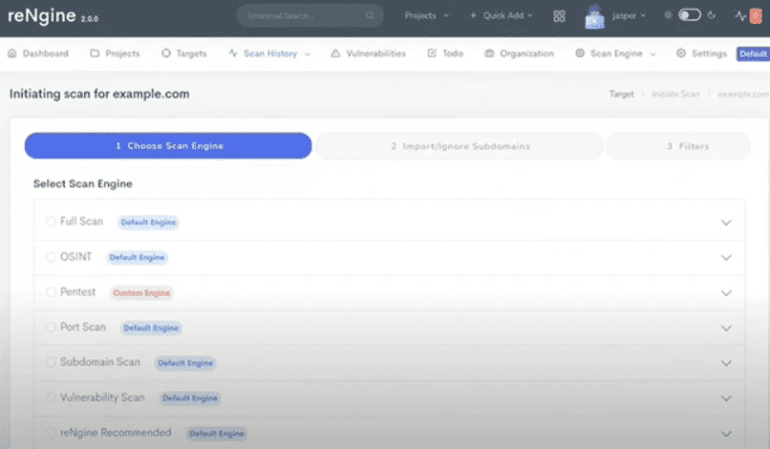- reNgine is an open-source automated reconnaissance framework for web applications.
- Developed to streamline reconnaissance processes, it offers highly configurable and efficient workflows.
- Key features include actionable insights presented through charts, maps, and visualization trees.
- The Projects feature allows effortless organization of recon data into distinct project spaces.
- Future plans include LLM integration and a ‘model toolkit’ feature for enhanced customization.
Main AI News:
In the realm of web application reconnaissance, efficiency is paramount. Enter reNgine, an open-source automated reconnaissance framework designed to revolutionize the process. Unlike conventional tools, reNgine offers a highly configurable and streamlined approach, making it a preferred choice among bug bounty hunters, penetration testers, and corporate security teams.
Developed to address the limitations of existing reconnaissance tools, reNgine stands out for its ability to automate and refine information collection processes. According to Yogesh Ojha, the mastermind behind reNgine, the inspiration for the project stemmed from a desire to streamline reconnaissance workflows. “Using various open-source tools to pipeline the recon process wasn’t necessarily new,” Ojha explains. “But they were all missing the major component of reconnaissance, i.e., correlation between the recon data.”
Key to reNgine’s effectiveness are its innovative features. By presenting actionable insights through charts, maps, and visualization trees, reNgine empowers users to uncover valuable reconnaissance data efficiently. One standout feature is Projects, which allows users to organize recon data effortlessly. Each project is equipped with its own dashboard, ensuring that scan results remain separate and well-organized.
Looking ahead, Ojha has ambitious plans for reNgine. “Currently, I am working on bringing LLM integration to reNgine,” he reveals. “With the rise of LLM models such as Llama3 and Llama2, I expect it will help with reconnaissance reports.” Additionally, Ojha aims to enhance accessibility by introducing a ‘model toolkit’ feature. This feature will enable users to install custom LLM models, expanding the capabilities of reNgine beyond its current offerings.
As reNgine continues to evolve, its commitment to innovation remains steadfast. With a vision for the future that includes support for emerging technologies like LLM integration and customizable GPT versions, reNgine is poised to redefine the landscape of web application reconnaissance. Stay tuned for updates as reNgine continues to push the boundaries of possibility in the world of cybersecurity.
Conclusion:
The emergence of reNgine signifies a significant shift in the landscape of web application reconnaissance. Its innovative features and commitment to evolution position it as a game-changer in the industry. With the promise of LLM integration and customizable GPT versions on the horizon, reNgine is poised to capture a significant market share and redefine best practices in cybersecurity reconnaissance.

